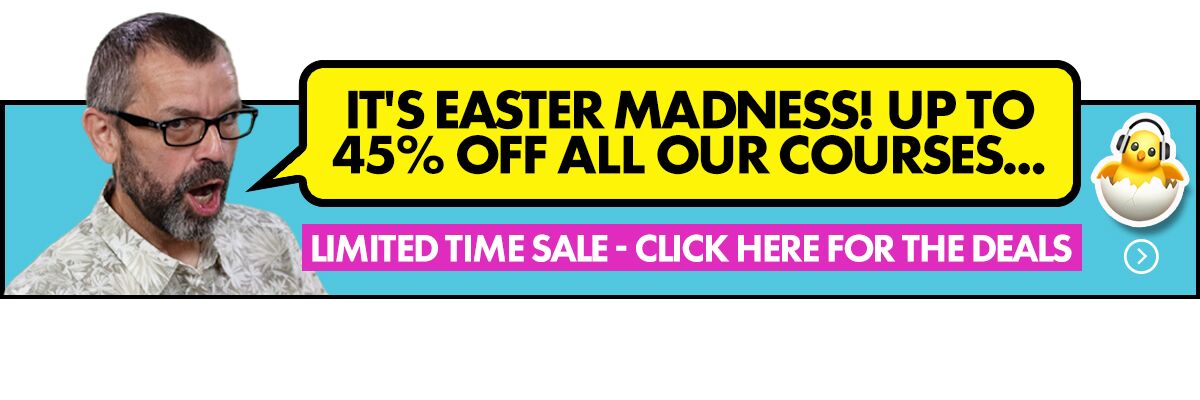When it comes to choosing which DJ software to use, there are a lot of solid options. In this Head To Head feature we take two popular platforms – Serato DJ Pro and Traktor Pro 3 – and see how they stack up against each other.
I’m new to digital – what exactly are these apps?
Serato is a company that makes digital DJ software. Its first was called Serato Scratch Live and it was released in the mid-2000s. A lot has changed in digital DJing since then, and today Serato’s latest app is called Serato DJ Pro (and Serato DJ Lite for beginners). It can be used with turntables, DJ media players and controllers.
Traktor is Native Instruments’ laptop DJ software, and Traktor Pro 3 is the current version. It’s one of the first digital DJ apps, launching back in 2000. It’s gone through several iterations since then, most of which were in step with DJ controllers that Native Instruments put out including the Traktor Kontrol S4, the jogwheel-less Traktor Kontrol S8 and the new Traktor Kontrol S4 Mk3 with Haptic Drive kinetic jogwheels.
We’ll look at what each app has to offer, and how they differ, to help you decide which one will suit you best.
1. User interface
For years, Traktor’s unique interface with separated virtual decks was a deterrent for some DJs, who preferred the parallel scrolling waveforms that Serato DJ offers to visualise playing tracks. With the recently released 3.1 update, Traktor now has the option to stack its waveforms. Other than a few other UI differences, both Serato and Traktor give you similar fundamental features – saving cue points and loops, organising tracks with playlists, applying FX, recording mixes, and connecting to turntables, media players, or controllers.
2. Hardware compatibility
Serato DJ Pro continues to hold the edge in terms of hardware compatibility, with numerous partnerships with manufacturers that offer a range of mixers, controllers, and accessories that work plug-and-play with the software. It will work with Pioneer’s CDJ and DJM series of players and mixers, as well as Denon DJ’s Prime Series hardware. On the other side, Native Instruments (the developer of Traktor) also builds its own controllers and mixers that work seamlessly with its software. Traktor can be configured to work with other hardware as well, for those willing to take the time to Midi map.
An area that Traktor has always shined in is customisation. There isn’t much in the interface and settings that can’t be tweaked: from what is displayed in the track decks to to the deep, detailed control over Midi mappings. This amount of flexibility will be exciting and welcome to some, and unnecessary or overwhelming to others. For the latter, Serato DJ Pro might be more suitable, with just enough options to make sure the software looks and works the way you want it to.
Both Serato DJ Pro and Traktor Pro 3 give you the ability to DJ directly from a laptop without connecting any hardware. Traktor includes this feature, while Serato DJs will need to opt for the US$29 Serato Play expansion pack.
3. DVS control
One of the biggest changes that version 3 brought to Traktor Pro was the inclusion of Traktor Scratch, and the ability to use their DVS control with virtually any sound card. This opens the door for DJs to use their existing mixers and audio interfaces with Traktor when using timecode vinyl or CDs. A list of compatible sound cards and mixers can be found on Native Instruments’ website.
4. Unique features
Serato DJ Pro offers a few features that Traktor currently does not. Video DJs can utilise Serato’s Video expansion pack (sold separately) to mix music videos and visuals into their sets. Version 2.1 added support for streaming services Tidal and SoundCloud, allowing DJs with premium subscriptions to access their massive music libraries and play those tracks from within Serato DJ.
Traktor Pro 3 features Remix Decks and Stem Decks, which bring a touch of live performance and improvisation to a DJ’s set. Remix Decks let you layer samples, loops, build-ups, and effects to build a track from scratch while keeping everything in sync. Stem Decks let you deconstruct a track by separating its lead, bass, drums, and vocals, allowing you to mix any of those parts with others.
5. Pricing
Traktor Pro 3 costs US$99 USD for the fully loaded version, which includes DVS support, 40+ FX, and high-quality key lock and time stretching. Serato’s DJ licence costs US$129, which will activate the software once compatible hardware is connected. Depending on your hardware, you may need to purchase extra expansion packs to match Traktor’s included features.
Finally…
Both of these platforms offer a great DJing experience, and for many DJs, it will come down to personal preference in the interface and the features. Fortunately, both apps have free trials available for you to test drive and see which one works best for your DJing style. The hardware you use will also play a role in deciding, as will your budget. Serato DJ Pro and Traktor Pro are available for Mac and PC, and can be downloaded from their websites.
Which DJ software are you going to use? Have you tried them both? Let us know in the comments below.


